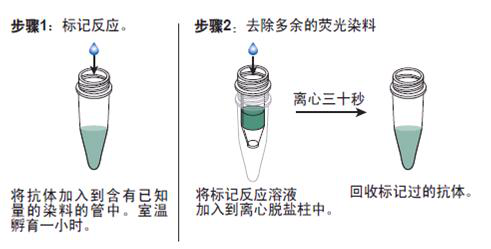
|

| 产地 | 进口、国产 |
| 品牌 | 上海莼试 |
| 保存条件 | Store at -20 °C |
| 货号 | CS10059 |
| 应用范围 | WB=1:100-500 ELISA=1:500-1000 IHC-P=1:100-500 IHC-F=1:100-500 ICC=1:100-500 IF=1:100-500 |
| CAS编号 | |
| 抗体名 | Anti-OPA1 |
| 克隆性 | |
| 靶点 | 详见说明书 |
| 适应物种 | 详见说明书 |
| 形态 | 详见说明书 |
| 宿主 | 详见说明书 |
| 亚型 | IgG |
| 标识物 | 详见说明书 |
| 浓度 | 1mg/1ml% |
| 免疫原 | KLH conjugated synthetic peptide derived from human OPA1 |
产品订购信息:
英文名称 Anti-OPA1
中文名称 相关蛋白1抗体品牌
别 名 Dynamin like 120 kDa protein; Dynamin like 120 kDa protein, mitochondrial; Dynamin-like 120 kDa protein; Dynamin-like 120 kDa protein, form S1; FLJ12460; Juvenile kjer type optic atrophy; Juvenile kjer-type optic atrophy; KIAA0567; KJER type; Large GTP binding protein; largeG; MGM1; Mitochondrial dynamin like 120 kDa protein; Mitochondrial dynamin like GTPase; NPG; NTG; OAK; OPA 1; OPA1; OPA1 gene; OPA1_HUMAN; Optic atrophy 1 (autosomal dominant); OPTIC ATROPHY 1; Optic atrophy 1 gene protein; Optic atrophy 1 homolog (human); Optic atrophy protein 1; Optic atrophy protein 1 homolog.


浓 度 1mg/1ml
规 格 0.2ml/200μg
抗体来源 Rabbit
克隆类型 polyclonal
交叉反应 Human, Mouse, Rat, Dog, Pig, Cow, Horse, Rabbit, Sheep
产品类型 一抗
研究领域 心 细胞生物 神经生物学
蛋白分子量 predicted molecular weight: 111kDa
性 状 Lyophilized or Liquid
免 疫 原 KLH conjugated synthetic peptide derived from human OPA1
亚 型 IgG
纯化方法 affinity purified by Protein A
储 存 液 Preservative: 15mM Sodium Azide, Constituents: 1% BSA, 0.01M PBS, pH 7.4
相关蛋白1抗体品牌 产品应用 WB=1:100-500 ELISA=1:500-1000 IHC-P=1:100-500 IHC-F=1:100-500 ICC=1:100-500 IF=1:100-500
(石蜡切片需做抗原修复)
not yet tested in other applications.
optimal dilutions/concentrations should be determined by the end user.
保存条件 Store at -20 °C for one year. Avoid repeated freeze/thaw cycles. The lyophilized antibody is stable at room temperature for at least one month and for greater than a year when kept at -20°C. When reconstituted in sterile pH 7.4 0.01M PBS or diluent of antibody the antibody is stable for at least two weeks at 2-4 °C.
Important Note This product as supplied is intended for research use only, not for use in human, therapeutic or diagnostic applications.
产品介绍 OPA1 is a 120kDa protein belonging to the dynamin family. The OPA1 gene has been localized to 3q29. The gene is targeted to mitochondria and is involved in mitochondrial biogenesis. Defects in OPA1 are a cause of optic atrophy type 1. OPA1 is mostly expressed in retina but can also be expressed in brain, testis, heart and skeletal muscle.
Function : Dynamin-related GTPase required for mitochondrial fusion and regulation of apoptosis. May form a diffusion barrier for proteins stored in mitochondrial cristae. Proteolytic processing in response to intrinsic apoptotic signals may lead to disassembly of OPA1 oligomers and release of the caspase activator cytochrome C (CYCS) into the mitochondrial intermembrane space.
Subcellular Location : Mitochondrion inner membrane. Mitochondrion intermembrane space.
Tissue Specificity : Highly expressed in retina. Also expressed in brain, testis, heart and skeletal muscle. Isoform 1 expressed in retina, skeletal muscle, heart, lung, ovary, colon, thyroid gland, leukocytes and fetal brain. Isoform 2 expressed in colon, liver, kidney, thyroid gland and leukocytes. Low levels of all isoforms expressed in a variety of tissues.
Post-translational modifications : PARL-dependent proteolytic processing releases an antiapoptotic soluble form not required for mitochondrial fusion.
DISEASE : Defects in OPA1 are a cause of optic atrophy type 1 (OPA1) [MIM:165500]. OPA1 is a dominantly inherited optic neuropathy occurring in 1 in 50,000 individuals that features progressive loss in visual acuity leading, in many cases, to legal blindness.
Defects in OPA1 are the cause of optic atrophy 1 with deafness (OPA1D) [MIM:125250]. Some individuals with mutations in OPA1 manifest also ophthalmoplegia and myopathy.
Similarity : Belongs to the dynamin family.
Database links : UniProtKB/Swiss-Prot: O60313.3

Collagen I 小鼠I型胶原Multi-class antibodies规格: 48T
Anti-DUSP1/MKP-1 原活化蛋白激酶磷酸酶-1抗体Multi-class antibodies规格: 0.2ml
Rhesus antibody Rh MTBP/MDM2BP 双微体2癌基因结合蛋白抗体 规格 0.2ml
TPS(Human Total protein S) ELISA Kit 人总蛋白S 96T
SOX30 英文名称: 转录因子SOX30抗体 0.1ml
CD14 英文名称: 内毒素受体抗体 0.1ml
Anti-DUSP1/MKP-1 原活化蛋白激酶磷酸酶-1抗体Multi-class antibodies规格: 0.2ml
UPAR 人凝血酶受体Multi-class antibodies规格: 48T
Anti-Connexin-32 间隙连接蛋白32抗体Multi-class antibodies规格: 0.1ml
Rhesus antibody Rh Nicastrin 蛋白APH2抗体 规格 0.1ml
Human Ig-like transcripts Receptor,ILTsR ELISA Kit 人免疫球蛋白样转录体受体 96T
TNFRSF5 英文名称: 坏死因子受体超家族成员5抗体 0.1ml
Claudin 22 英文名称: 紧密连接蛋白22抗体 0.1ml
Anti-Connexin-32 间隙连接蛋白32抗体Multi-class antibodies规格: 0.1ml
Adiponectin 脂联素(多肽片断抗原)Multi-class antibodies规格: 0.5mg
Anti-B7H4 B7-H4抗体Multi-class antibodies规格: 0.1ml
Rhesus antibody Rh Phospho-Ack1(Tyr859/860) 磷酸化Ack1抗体 规格 0.1ml
MAP2a,b 浓缩液 0.1ml 进口分装
UBF1 英文名称: RNA聚合酶I抗体 0.1ml
CHST6 英文名称: 碳水化合物磺基转移酶6抗体 0.1ml
Anti-B7H4 B7-H4抗体Multi-class antibodies规格: 0.1ml
VEGFA Protein Human 重组人 / 食蟹猴 VEGF / VEGFA / VEGF165 蛋白
HSC 人细胞
LAIR2 Others Human 人 LAIR2 / CD306 人细胞裂解液 (阳性对照)
J82人膀胱移行细胞癌 J82 human bladder ansitional cell carcinoma MEM培养基(GIBCO)+10%FBS
大额牛肺细胞;BFR-L1
大鼠*管状上皮细胞(RRTEpiC)(5×105) RL95-2, 人子宫内膜腺癌细胞系 Human
CL-0371K7M2 wt(小鼠成骨细胞)5×106cells/瓶×2
MAPK1 Others Human 人 ERK2 / MAPK1 / MAPK2 杆状病毒-昆虫细胞裂解液 (阳性对照)
人肝窦内皮细胞总RNAHHSEC NA
T-24细胞,膀胱变移细胞癌 人肺鳞癌细胞,SK-MES-1细胞 UM-UC-3, 人膀胱移行细胞癌
家猫肺细胞;FCA-L1
HA Others H1N1 甲型 H1N1 (A/California/04/2009) 血凝素 (Hemagglutinin / HA) 人细胞裂解液 (阳性对照)
相关蛋白1抗体品牌 VEGFA Protein Human 重组人 / 食蟹猴 VEGF / VEGFA / VEGF165 蛋白
HSC 人细胞
LAIR2 Others Human 人 LAIR2 / CD306 人细胞裂解液 (阳性对照)
J82人膀胱移行细胞癌 J82 human bladder ansitional cell carcinoma MEM培养基(GIBCO)+10%FBS
大额牛肺细胞;BFR-L1
大鼠*管状上皮细胞(RRTEpiC)(5×105) RL95-2, 人子宫内膜腺癌细胞系 Human

抗体的生物素化标记实验要点:
1. 相关蛋白1抗体品牌 如在反应混合液中有叠氮钠或游离氨基存在,会抑制标记反应。因此,蛋白质在反应前要对 0.1mol/L碳酸氢钠缓冲液或0.5mol/L硼酸缓冲液充分透析;
2.所用的NHSB及待生物素化蛋白质之间的分子比按蛋白质表面的ε-氨基的密度会有所不同,选择不当则影响标记的效率,应先用几个不同的分子比来筛选最适条件;
3.用NHSB量过量也是不利的,抗原的结合位点可能因此被封闭,导致抗体失活;
4.由于抗体的氨基不易接近可能造成生物素化不足,此时可加入去污剂如 Triton x-100, Tween20等;
5.当游离ε-氨基(赖氨酸残基的氨基)存在于抗体的抗原结合位点时,或位于酶的催化位点时,生物素化会降低或损伤抗体蛋白的结合力或活性;
6.生物素还可能与不同的功能基团,如羰基、氨基、巯基、异咪唑基及*基,也可与糖基共价结合;
7.交联反应后,应充分透析,否则,残余的生物素会对生物素化抗体与亲和素的结合产生竞争作用;
8.在细胞的荧光标记实验中,中和亲和素的本底低,但由于链霉亲和素含有少量正电荷,故对某些细胞可导致高本底。
抗体的鉴定:
1)相关蛋白1抗体品牌 抗体的效价鉴定:不管是用于诊断还是用于,制备抗体的目的都是要求较高效价。不同的抗原制备的抗体,要求的效价不一。鉴定效价的方法很多,包括有试管凝集反应,琼脂扩散试验,酶联免疫吸附试验等。常用的抗原所制备的抗体一般都有约成的鉴定效价的方法,以资比较。如制备抗抗体的效价,一般就采用琼脂扩散试验来鉴定。
2)抗体的特异性鉴定:抗体的特异性是指与相应抗原或近似抗原物质的识别能力。抗体的特异性高,它的识别能力就强。衡量特异性通常以交叉反应率来表示。交叉反应率可用竞争抑制试验测定。以不同浓度抗原和近似抗原分别做竞争抑制曲线,计算各自的结合率,求出各自在IC50时的浓度,并按公式计算交叉反应率。
如果所用抗原浓度IC50浓度为pg/管,而一些近似抗原物质的IC50浓度几乎是无穷大时,表示这一抗血清与其他抗原物质的交叉反应率近似为0,即该血清的特异性较好。
3)抗体亲和力:是指抗体和抗原结合的牢固程度。亲和力的高低是由抗原分子的大小,抗体分子的结合位点与抗原决定簇之间立体构型的合适度决定的。有助于维持抗原抗体复合物稳定的分子间力有氢键,疏水键,侧链相反电荷基因的库仑力,范德华力和空间斥力。亲和力常以亲和常数K表示,K的单位是L/mol。抗体亲和力的测定对抗体的筛选,确定抗体的用途,验证抗体的均一性等均有重要意义。